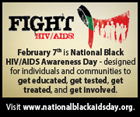Media Statement
For immediate release: July 19, 2010
Media Contact On-Site (Vienna): Elizabeth-Ann Chandler, +1.404.918.3532, echandler@cdc.gov
Additional Contact (Atlanta): National Center for HIV/AIDS, Viral Hepatitis, STD, and TB Prevention - News Media Line, +1.404.639.8895, NCHHSTPMediaTeam@cdc.gov
CDC Statement on CAPRISA Microbicide Study Results
For Attribution to Kevin Fenton, MD, PhD
Director, National Center for HIV/AIDS, Viral Hepatitis, STD, and TB Prevention
The CAPRISA microbicide trial results are an exciting step forward for HIV prevention. While these findings may need to be confirmed by other research to meet requirements for licensure by FDA and other regulatory bodies throughout the world, they suggest that we could soon have a new method to help reduce the heavy toll of HIV among women around the world. Women represent the majority of new HIV infections globally, and urgently need methods they can control to protect themselves from infection. It is also very encouraging that the study found that the microbicide significantly reduced the risk of genital herpes (HSV-2), which is common in developing countries and in the United States, and facilitates HIV transmission.
The results of this tenofovir-based vaginal gel also give us reason to be very hopeful about the potential of oral antiretroviral (ARV) medications to prevent HIV infection. CDC and other research institutions are studying the safety and efficacy of antiretroviral pills to prevent infection, an approach called pre-exposure prophylaxis, or PrEP. This approach is being examined among several at-risk populations, including men who have sex with men, injection drug users, and heterosexual men and women. PrEP study results are expected in 2011.
Until new prevention tools are available, current proven HIV prevention strategies are our most effective defense against HIV. We must continue to apply, expand, and promote a comprehensive prevention approach – utilizing HIV testing and all proven behavioral and biomedical interventions.
While there is clearly more work to be done in our search for new prevention methods, we are on the right track. We must support and intensify the search for new tools that when combined with existing prevention methods can help put an end to the devastation of HIV/AIDS and save millions of lives around the world.
###
U.S. DEPARTMENT OF HEALTH AND HUMAN SERVICES





